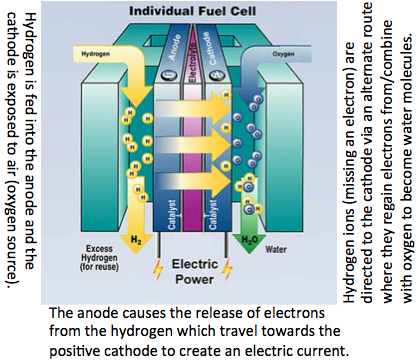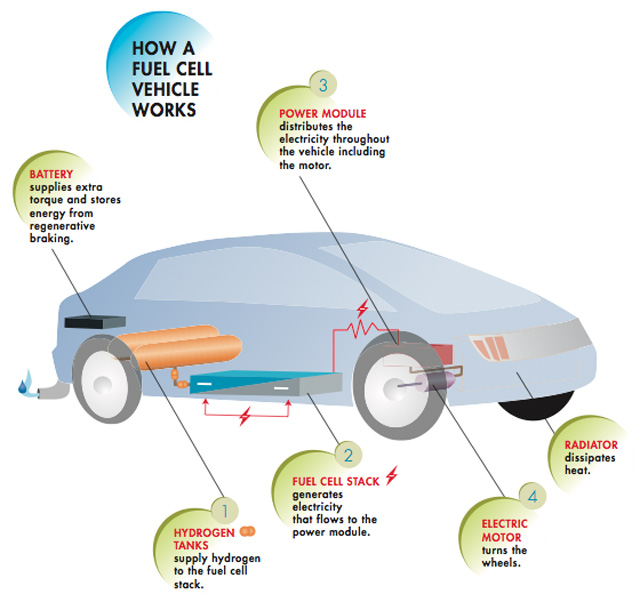Hydrogen Production
The fickle thing about Hydrogen is that it is the most abundant element in the universe, but it is often combined with other elements, making it difficult to harvest. Currently, hydrogen production in the US consists mainly of steam reformation of natural gas.
Here’s the chemical equation: CH4 + H20 = CO + 3H2
The National Renewable Energy Laboratory (NREL) is pursuing other pathways to produce hydrogen that could turn out to be more cost effective and more environmentally friendly. Please follow this link to their research and development page to see their findings.
How it works:
Hydrogen Fuel Cell Vehicles (HFCVs) operate on compressed hydrogen, which is fueled into tanks within the body of the vehicle from a fueling station. This fuel then moves to the power generating part of the vehicle: the fuel cell.

The electricity produced here drives an electric motor that turns the wheels.
The exhaust from this type of engine comes out simply as water vapor and heat.
This image shows the whole process:

Efficiency
The Center for Climate and Energy Solutions relays that the Honda FCX Clarity for model year 2011 has a fuel economy equivalent to 60 miles per gallon of gasoline (mpg), while the 2011 Mercedes-Benz F-Cell has a fuel economy of 53 mpg. In comparison, the average fuel economy for passenger cars from model year 2010 is 33.8 mpg for a gasoline vehicle, and the most efficient HEV from the same model year has a fuel economy rating of 50 mpg.
This video shows a more in depth explanation of how these vehicles work.
For more information about Hydrogen Fuel Cell Vehicles, please see this Hydrogen Fuel Cell Factsheet.
References
“How a Hydrogen Fuel Cell Vehicle Works.” Hygen Industries. Hygen, 2015. Web. 05 May 2015.
“Hydrogen Fuel Cell Vehicles.” The Center for Climate and Energy Solutions. The Center for Climate and Energy Solutions, n.d. Web. 05 May 2015.
Author: Drew Beyer
Editor: Justin Pié